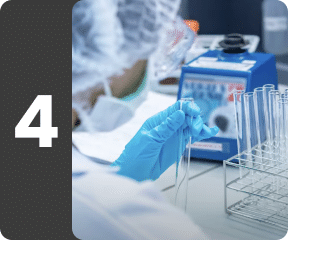Absolute Eosinophil Count
Understanding Absolute Eosinophil Count
What is Absolute Eosinophil Count?
An Absolute Eosinophil Count test measures the number of eosinophils, a type of white blood cell, in the blood. This test is a key indicator of certain allergic diseases, infections, etc. in the body. It is often done as part of a complete blood count test that also measures other types of blood cells.
Eosinophils form an integral part of the immune system and help fight off infections. These cells play an important role in inflammatory responses to allergies. A higher-than-normal eosinophil count, also called eosinophilia, may indicate an allergic reaction, a parasitic infection, or a skin disease. Whereas, a lower-than-normal eosinophil count, also called eosinopenia, may indicate excessive stress, overproduction of cortisol hormone, alcohol misuse, or the presence of any other underlying condition.
No special preparation is required for an Absolute Eosinophil Count test; eat or drink as per your daily routine. Test result ranges are approximate and may differ slightly between different labs depending on the methodology and laboratory guidelines. Talk to your doctor about your specific test results. The results will help them determine your medical condition and formulate an overall treatment plan.
What is Absolute Eosinophil Count used for?
An Absolute Eosinophil Count test can be done:
-
As part of a complete blood count test to monitor your overall health.
-
In case of signs or symptoms suggestive of an allergy to one or more substances, such as red itchy eyes, coughing, nasal congestion, asthma, dermatitis, or abdominal pain.
-
To identify the cause of an inflammation or infection.
-
To detect the early stages of Cushing’s disease.
-
To detect a rare disease known as acute hypereosinophilic syndrome.
What does Absolute Eosinophil Count measure?
An Absolute Eosinophil Count test measures the number of eosinophils in the blood and provides important information about the functioning of the immune system. Eosinophils originate from bone marrow and have a lifespan of 8-18 hours. These cells are involved in fighting certain types of infections and responding to allergic reactions in the body. Other functions of these cells include movement to the inflammation areas, trapping substances, killing cells, and bactericidal and antiparasitic activities. They also help in the treatment of immediate allergic reactions and modulation of inflammatory responses. By measuring the number of eosinophils in the blood, this test provides important information about the functioning of the immune system.
Interpreting Absolute Eosinophil Count results
Interpretations
The absolute eosinophil count ranges from 0.02 - 0.50 thou/mm3.
Frequently Asked Questions about Absolute Eosinophil Count
Q. Which diseases can an Absolute Eosinophil Count test detect?
Q. How is an Absolute Eosinophil Count test done?
Q. Do I need to fast before taking the Absolute Eosinophil Count test?
Q. Is there any risk associated with an Absolute Eosinophil Count test?
Q. What are the reasons for the low eosinophil count?
Q. What are the reasons for the high eosinophil count?
Book a Absolute Eosinophil Count test at home near me





Other tests









